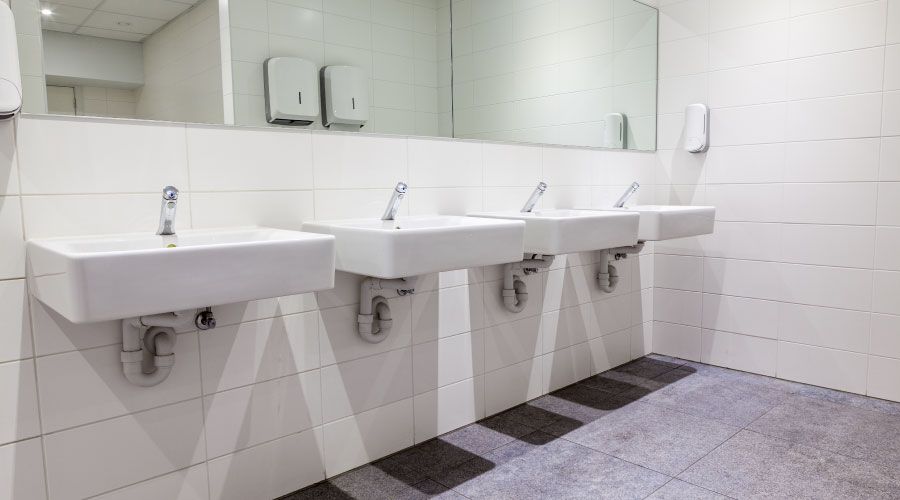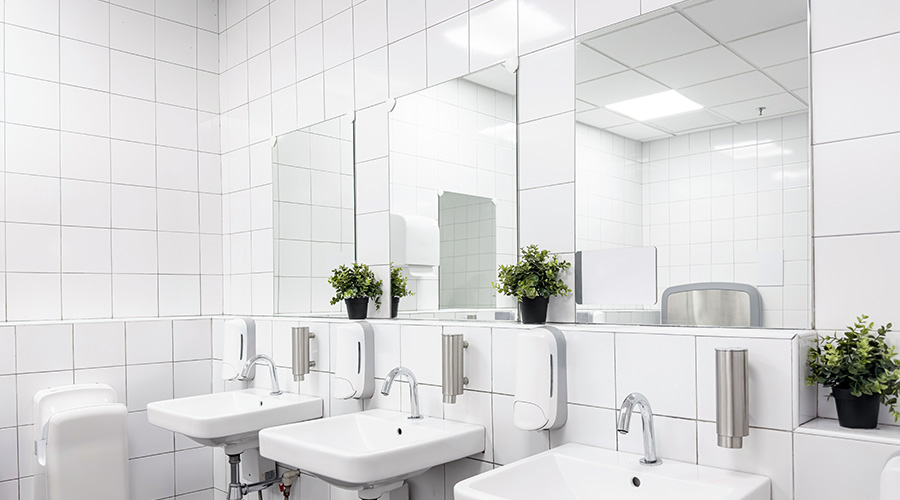 Given the changes in products and facilities, the task of selecting the most appropriate drain cleaning equipment for any particular facility might seem overwhelming.
Given the changes in products and facilities, the task of selecting the most appropriate drain cleaning equipment for any particular facility might seem overwhelming.Drain Cleaning: Understanding Facility Needs and Equipment Options
Manufacturers offer updates and guidance to help managers make savvy choices of drain cleaning equipment
Given the changes in products and facilities, the task of selecting the most appropriate drain cleaning equipment for any particular facility might seem overwhelming. One good place to start the process is understanding the challenges ahead.
“The best advice is to contact a professional drain cleaner or facility manager that has experience with the type of waste going down the drains in question,” Goede says. “Understanding what goes down the drain is critical to the cleaning approach. A greasy burger chain will have different drain cleaning needs than a pet-grooming salon. The solution for the greasy burger chain is most likely not going to be the same solution for the dog-grooming salon.”
Equipment manufacturers also can play a central role in the decision-making process.
“I would suggest managers request a visit by a company’s representative so they can see first hand what the needs are and match the correct machines with the application,” Speranza says. “In all likelihood, multiple machines may be required to adequately maintain a facility’s plumbing and drain needs.” During such product research, Speranza emphasizes the importance of safety.
“Safety should always be a major concern,” he says. “Is the drain cleaner equipped with a GFCI for protection against electrical shock? Are there sufficient operating and safety guides? Is a factory representative available for onsite product training?”
Goede suggests managers incorporate the following general considerations into product-selection decisions:
Experience. “First, understand if the unit can be used by someone with limited drain cleaning knowledge or an experienced hand. Make sure that the person using the machine feels comfortable using it in a safe way. Otherwise, call a trained professional.”
Compatibility. “Ensure that the machine you are buying is designed to clean the waste or debris in the drain. Tree roots, fatty grease or a child’s toy are all examples of things that could be in the drain. Make sure that what you need to clean can be taken care of with the machine you decide on.”
Reach. “Make sure that the machine you are looking to invest in not only clears the blockage but gets to the next cleanout or larger line. Cleaning out a 100 -foot drain with a blockage at 57 feet using a 70-foot machine doesn’t guarantee that the blockage won’t resurface between the 71 and 100 foot mark.”
In terms of specific features and functions of drain cleaning equipment designed to address efficiency and productivity, Keegan advises managers to focus on these:
Ease of setup. “One of the most frequent challenges of any drain cleaning job is simply getting the machine to the job. The capabilities associated with cordless design minimize the weight of tools for easy portability to and from the job and maximize the ease of setup. In addition, many of these cordless solutions have been optimized with the power to tackle multiple jobs on a single battery charge.”
Containing the mess. “Managers should focus on drain cleaning machines with fully enclosed drums for better mess containment and for easier use in tight spaces where free-spinning drums might damage fixtures. In addition, they should also seek out powered closet and urinal augers that are optimized to clear the clog without damaging porcelain fixtures.”
Cable size. “Cables are the foundation of drain cleaning, so ensuring your staff is using the right diameter cable for the pipe size they’re clearing is very important.”
Silverman also stresses the need to focus on a machine’s cable in making a selection.
“No matter what machine you choose, it’s the cable that does all the work,” he says. “Pick a machine with a durable cable, and you’ll have fewer maintenance issues. A cable with a wire-rope inner core can stand up to abuse and resist kinking and breaking.”
Related Topics:














